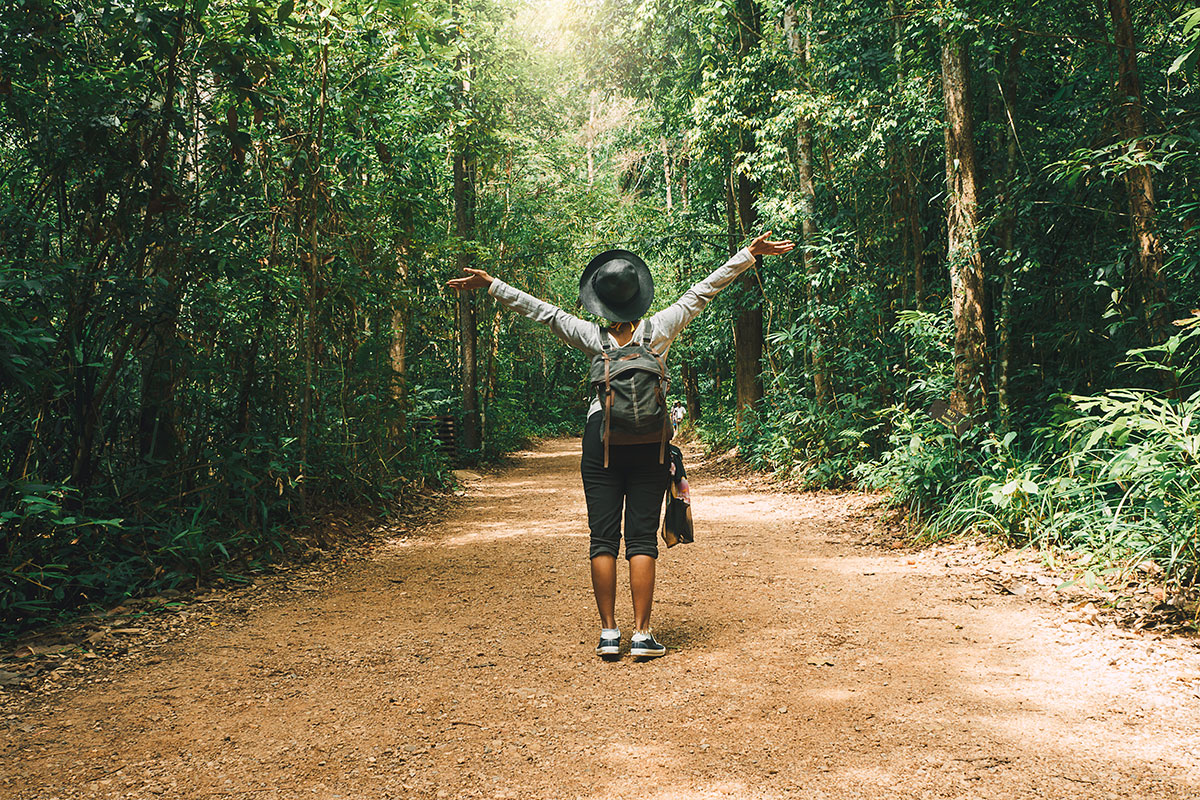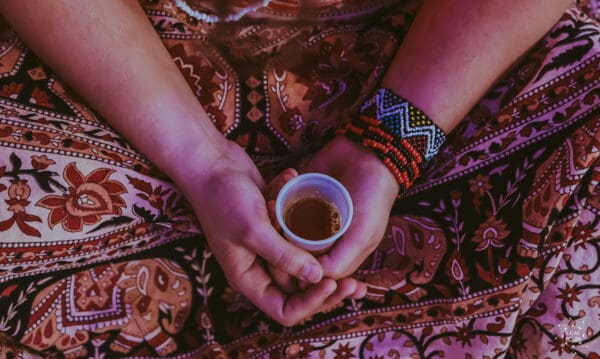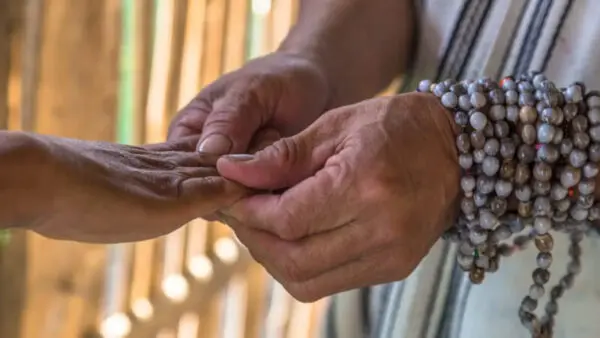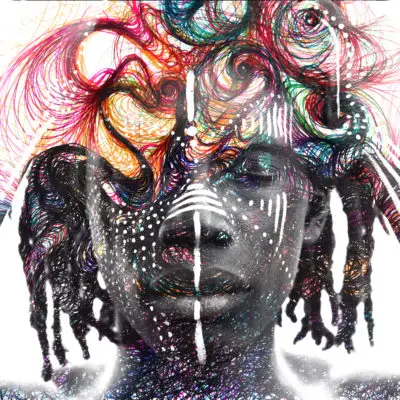Ayahuasca ceremonies require a good deal of preparation. In addition to preparing the mind and body, if you’re heading to South or Central America, you have to make your reservations, pack, fly to a foreign country, and travel to the retreat center, all before you travel the astral realms in the ceremony. Here are some words from the wise and a checklist of must-have items for your South or Central America ayahuasca experience.
Pro-Tips for Traveling to the Jungle to Drink Ayahuasca
It’s good practice when traveling internationally to make a copy of your passport and keep it in your luggage. You should also email yourself a picture of your passport in case it gets lost.
Clearly and legibly mark all of your luggage, including contact information for how to reach you while you’re abroad and back home. Have emergency contact information on you at all times. Your emergency contact should have a copy of your flight and transit information, accommodations, and itinerary for the whole trip.
Before you leave, find someone reliable at home to take care of your stuff for you. Whether it’s feeding and playing with your cat, checking on your place, watering the plants, or something as serious as taking care of your child(ren), you should feel confident that your responsibilities are in the capable hands of a trusted person. There is enough to worry about already, and so the more you can delegate out your responsibilities, the more you can surrender into the experience.
Figure out money stuff ahead of time. Some countries in South and Central America such as Costa Rica will accept American money since they have such a large tourism industry. However, your bills must be clean, unmarked, unfolded and relatively new. If you can acquire the foreign currency ahead of time, this may make things easier for you. You should be able to withdraw money from an ATM without much trouble, but make sure your PIN is 4 digits as some foreign ATMs don’t accept pins with more than 4 numbers.
Don’t forget to alert your bank and cell phone company that you’ll be traveling internationally. Find out what your mobile company offers for international trips. For a short stay, it may be more economical to go with their international plan (just make sure you follow their instructions so you don’t end up racking up a huge unexpected cost). For longer trips, you can usually acquire a new sim card from a cellular provider in that country; sometimes they even have them stationed at the airport. You will need your passport in order to acquire a sim card.
Speaking of cell phones, be cautious about using your cell phone while out in public. Stay focussed on what you are doing and what’s going on around you, for safety reasons as well as to get the full benefit of this experience visiting a new place. Looking at your phone is distracting, and can be an invitation for someone to quickly swipe it out of your hands and disappear.
Learn some basic phrases. Even if you’re insecure about your foreign language skills, locals will appreciate you making the effort to communicate in their tongue while you visit their home country. Plus, practice makes perfect, and what better opportunity to practice your Spanish or Portuguese than by challenging yourself to use it?
Learn survivor phrases such as hello; please; yes, no, thank you; where is the bathroom?; I don’t speak ________; do you speak English; and I need help could come in handy. Consider having a cheat sheet of common phrases easily accessible in your pocket or bag.
Be respectful, and keep an open mind. Remember that you are a visitor to another country, so customs and norms can be different than what you are used to.
Get informed about the culture before you arrive. Try to stay open and humble, while of course keeping yourself safe and having your boundaries. Respect local customs, such as refraining from nude swimming. Although there is nothing shameful about a naked body, nudity is considered inappropriate in many South and Central American cultures. Whether you agree with the custom or not, swimming nude is an act of colonialism. Following these customs is a sign of respect and gratitude for being able to visit someone else’s home.
Just as psychedelic work is a balance of effort and surrender, packing for your ayahuasca retreat is a balance of being prepared and not overpacking. Don’t leave home without these 10 items.
Your 10 Must-Have Items for a Trip to the Jungle
- Water bottle. Travel can be dehydrating, especially in a hot climate. Staying hydrated before your ayahuasca experience is very important. On travel days, try to balance hydration with practicality; you don’t want to have to use the bathroom at every stop if you can avoid it. Remember, bottled water is safer than tap water in foreign countries. There are many UV Light and portable filtration devices for travelers to purify their water as well.
- Non-toxic sun protection and insect repellent. Sunglasses are a must. A few different hats will come in handy. Don’t forget sunscreen!
It can be buggy in the jungle. Non-toxic insect repellents are safer to use and help protect you as well as the flora and fauna around you from harmful chemicals like DEET. If you’re concerned about insect-borne disease, wearing long-sleeved clothing and spraying on natural insecticide should protect you well enough. Outdoor equipment retailers sell mosquito-proof suits that may be worth the price for your protection and peace of mind. - Eco-friendly toiletries. Most ayahuasca retreat centers are in nature, so bringing biodegradable, natural products is greatly appreciated in order to not contaminate the natural environment. Dr. Bronner’s soap is a versatile option as it can be used to wash dishes and clothing as well as your hair and body. It’s concentrated, so you can bring a small amount, dilute on arrival and have it last your whole trip.
- Headlamp or flashlight. Most ayahuasca ceremonies take place at night. The jungle is crawling with thousands of amazing creatures; shine your light so you can make sure not to step on them (and avoid potentially hurting yourself). A headlamp with multiple light settings, especially red light, will help you get to the bathroom during the ceremony without disturbing the other participants.
- Medication. Talk to your doctor before your trip about what medication to bring with you. Some doctors will prescribe an antibiotic that you can have with you just in case you need it and can’t access a pharmacy. Find out if there is malaria in the region you’re visiting and if there is, ask about anti-malaria medication. You could mention herbal options such as Artemesia. Remember to let the ayahuasca retreat center know about any medications, and do not take anything that is contraindicated with ayahuasca.
- Clothing. Pack plenty of layers. Quick drying, breathable fabrics are best for tropical climates. Temperatures can drop at night, and you could become very cold or shivery during the ceremony, so have at least one good set of warm clothes. A bathing suit, travel towel, clothes for walking or hiking outside, clothes for yoga, and clothes for travel days are all smart to have.
Bring enough underwear to last a week, just in case. Underwear made for travel is quick drying, light weight and antimicrobial. You can always wash and dry it in your room if laundry services are unavailable.
The humidity in the jungle lends itself to mold, so don’t bring anything with you that you wouldn’t want to get mold stained. Moving clothing, shoes and bags to a new spot in your room every day can help stop the spread of mold. Hanging things out in the sun daily is another great trick.
Sarongs are a wonderful travel option as they can be used as clothing, a light blanket to cover yourself with or sit on outside, a makeshift towel to dry off with, sun protection in a pinch, and more.
Touristy places will have plenty of clothing you can buy in case you don’t have something that you need.
- Shoes. A pair of shoes that are easy to put on/take off such as flip-flops will come in handy. If it’s the rainy season, consider bringing rain boots. If they are in good condition, you can always leave them behind for someone else to use so you don’t have to bring them home with you. It’s wise to bring shoes that you can walk comfortably in for long distances. If you plan to hike, make sure you are equipped for that. New shoes are a risky idea; whatever you bring should be broken in so you avoid getting blisters.
- Hair ties or bandana. Motorbike and bus rides can get windy. Make sure you have what you need to keep your hair in place. In ceremony, it’s advised to have something that holds your hair back while you are purging.
- Journal. Bring paper, pen/pencil and even some portable art supplies with you to record thoughts and visions from your ayahuasca experience in the hours and days following the ceremony. Drawing, coloring, writing down dreams, and free writing are all great activities to capture the musings that arise while you are on retreat. And, since many retreat centers have no wifi or very limited wifi, it could be good to have something to spend time on. A book or two can also be great to bring with you as a way to relax during the daytime.
- Plastic or Waterproof Bags. There is nothing quite like a sudden rainstorm in the jungle. One minute it can be clear blue skies, and the next you are hustling to save your stuff from the buckets of water falling from above. Keep plastic bags such as big trash bags in the exterior pockets of your luggage and backpack so you can easily take it out and cover everything. Small waterproof bags are great for protecting electronics and wallets.
What not to bring.
A list of what to bring is not complete without a list of what not to bring. So, leave behind any valuable jewelry and technological devices. Consider just bringing the bare minimum when it comes to technology so you don’t have to devote energy to worrying about it being lost, stolen or damaged. The rain forest is humid (not to mention it rains there, a lot) and could wreak havoc on your devices if not stored properly. Most importantly, retreat is an opportunity to unplug and get in touch with yourself. Taking a break from tech, if you can, may be powerful medicine.
Are you ready to blast off? Before you go, check out these tips on the ayahuasca diet, how to choose a retreat center, how to have an amazing ayahuasca experience (even if you vomit), and frequently asked questions about ayahuasca.







